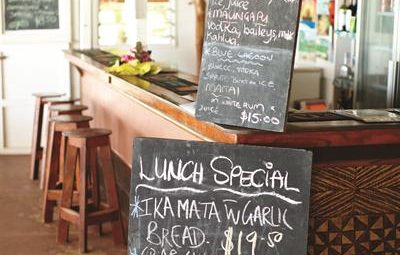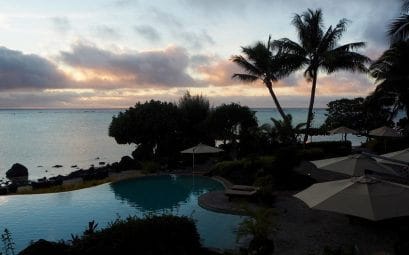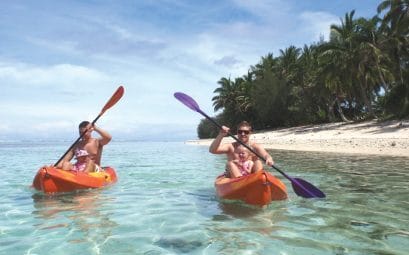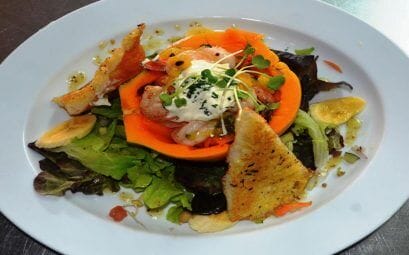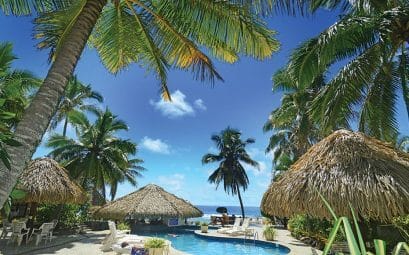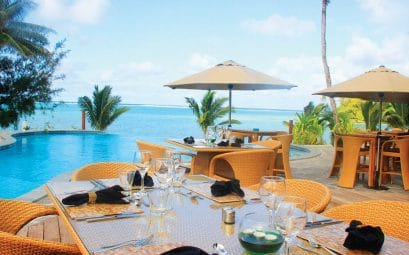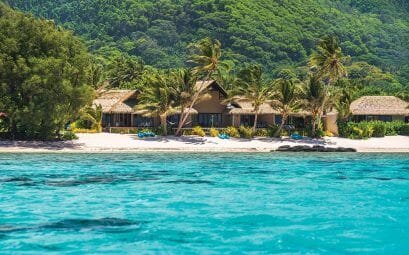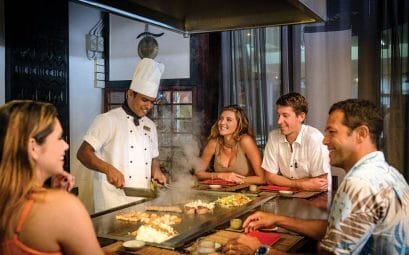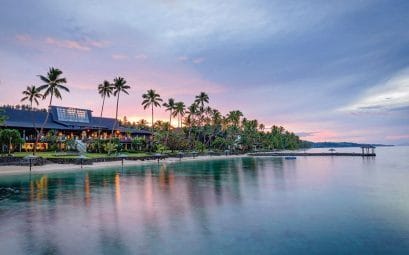Shopping in The Cook Islands
A variety of traditional handicrafts, like rito hats (similar to Panama hats), carvings, shell trinkets and musical instruments, may be purchased. Avarua is the largest shopping district. On Saturday mornings, Punanga, the popular local marketplace offers a selection of craft items and tropical delicacies. Quality souvenirs include ukuleles, island CD music, sarongs, local quilts and the infamous Cook Islands Black Pearl. Downtown, Mana Court has ample diving and snorkeling gear for those who need it.
Specialty shops line the coast of Ara Tapu Road, where more black pearl jewellery and local attire are found. Stamp collectors will be delighted with the special, colourful stamp designs at the Philatelic Bureau next to the Post Office.
Places to Visit In The Cook Islands
The Cook Islands’ landscape varies across different regions – from Rarotonga’s towering volcanic peaks, Mangaia’s and Atiu’s raised coral makatea and the North’s coral atolls.
Rarotonga is vibrant and lively, with verdant greenery that blends into its palm-fringed shores. Its main town is Avarua, where shopping and dining options are aplenty.
You can visit the “Sister Islands” from Rarotonga, like Aitutaki, which is renowned for its sugary beaches and turquoise lagoons. Atiu is another option, with pristine beaches and cave-riddled reefs. Mangaia’s formidable raised coral cliffs, Mauke’s mersmerising coral reef caves and Mitiaro’s subterranean pools and freshwater lakes full of freshwater eels – considered a delicacy by the locals, are also worth a visit.
Away from the wild side of Cook Islands sightseeing, lose yourself in the manicured gardens of the National Cultural Centre, or get another dose of culture at the Beachcomber Pearl and Art Gallery.
Water Activities, Diving & Snorkelling in The Cook Islands
The Cook Islands boast a plethora of water activities for your enjoyment. Cruise languidly along Muri Lagoon and Aitutaki Lagoon, touted as the most beautiful lagoons in the world for windsurfing, snorkelling and scuba diving. Boats are also available for hire if you want to go deep-sea or game fishing.
History buffs can catch a glimpse of the SS Maitai wreckage remnants in the Avarua harbour. Sunk in 1916, its main engine can be seen protruding from a reef.

